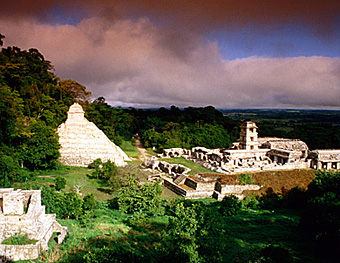
|
 |
 |
 Travel & Outdoors | January 2008 Travel & Outdoors | January 2008  
Adventure Guide to Mexico
Bird Watching: Chiapas
 Bonnie Tsui - NYTimes Bonnie Tsui - NYTimes
go to original


| | The reserve is probably the only place where you’ll encounter so many rare birds in the wild, including the quetzal — whose feathers were prized by ancient civilizations. | | |
With the Zapatista rebel chief penning mystery novels, and tourism locations in Chiapas featured prominently in last year’s Miss Universe pageant, the reputation for sociopolitical friction that this southern Mexican state has had in the past just might begin to lose some of its edge. But long before Subcomandante Marcos led an indigenous army out of the jungle on New Year’s Day 1994, demanding land and other rights for the state’s many Indian groups, Chiapas was best known for its incredible biodiversity. In the Lacandón rain forest, the Montes Azules Biosphere Reserve — designated in 1979 as the first biosphere reserve in Mexico — protects more than 1,200 square miles, home to a whopping number of bird species (close to 350, which comprises nearly a third of the country’s total), at least 3,400 plant species and more than 100 species of mammals.

The reserve is probably the only place where you’ll encounter so many rare birds in the wild, including the quetzal — whose feathers were prized by ancient civilizations — and the scarlet macaw, harpy eagle, king vulture and Muscovy duck, all of which are threatened with extinction.

The rain forest is also home to endangered jaguars, ocelots and tapirs. Last year, Mountain Travel Sobek began a new wildlife-focused trip that involves active exploration of Montes Azules and other nature areas. Visitors take guided boating trips along the reserve’s rivers and hike jungle paths lined with 200-foot ceiba trees, all in search of exotic birds, mammals and Maya archaeological sites. Other activities include swimming in waterfalls and “crocodile wrestling” (if you feel like channeling your inner crocodile hunter, you can help scientists catch, measure and tag crocodiles for a local conservation program). The trip also incorporates stays with local indigenous communities and interaction with local researchers who work on ongoing biosphere conservation efforts.

“We’re getting to know areas that have not been explored by outsiders,” said Mark Willuhn, trip leader for Mountain Travel Sobek in the region. He is also the director of the nonprofit group Mesoamerican Ecotourism Alliance. “One of the key things about this place is that there are so many indigenous communities, all with their own distinct cultures and traditions,” he said. “People travel all over the world for these kinds of cultural experiences when, two hours from Houston, it’s right here.”

Guests stay at small boutique eco-lodges like the five-room Lacandonia Adventure Lodge, which is in the center of the biosphere reserve. A series of thatched-roof cabañas overlooking Río Lacantún are constructed of tropical materials including bamboo and palm.

Mountain Travel Sobek, (888) 687-6235; www.mtsobek.com; eight-day exploratory Chiapas wildlife trip from $2,900 a person.


Bonnie Tsui is editor of “A Leaky Tent Is a Piece of Paradise” (Sierra Club), a collection of essays on the outdoors. | 
 | |
 |



